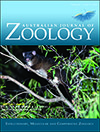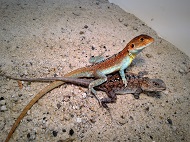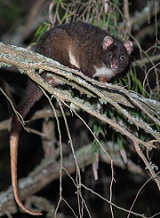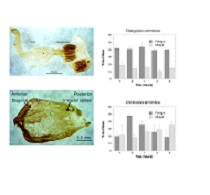Paul Cooper, Editor-in-Chief
(Australian National University)

Australian Journal of Zoology
Volume 68 Number 4 2020
Special IssueAustralian animals as models in physiological studies
The introduction to this special issue of the Journal on Australian animals as models in physiological studies provides an overview of the papers in the issue.
 , Michael B. Thompson, Christopher P. Burridge
, Michael B. Thompson, Christopher P. Burridge  , Meghan A. Castelli, Simon Clulow
, Meghan A. Castelli, Simon Clulow  , Duminda S. B. Dissanayake
, Duminda S. B. Dissanayake  , Caroline M. Dong
, Caroline M. Dong  , J. Sean Doody, Danielle L. Edwards
, J. Sean Doody, Danielle L. Edwards  , Tariq Ezaz
, Tariq Ezaz  , Christopher R. Friesen
, Christopher R. Friesen  , Michael G. Gardner
, Michael G. Gardner  , Arthur Georges
, Arthur Georges  , Megan Higgie
, Megan Higgie  , Peta L. Hill
, Peta L. Hill  , Clare E. Holleley
, Clare E. Holleley  , Daniel Hoops
, Daniel Hoops  , Conrad J. Hoskin
, Conrad J. Hoskin  , Deirdre L. Merry
, Deirdre L. Merry  , Julia L. Riley
, Julia L. Riley  , Erik Wapstra
, Erik Wapstra  , Geoffrey M. While
, Geoffrey M. While  , Sarah L. Whiteley, Martin J. Whiting
, Sarah L. Whiteley, Martin J. Whiting  , Stephen M. Zozaya and Camilla M. Whittington
, Stephen M. Zozaya and Camilla M. Whittington 

Australian lizards exhibit a diversity of reproductive traits and provide excellent opportunities to study how those traits function and evolve. We review the contributions that Australian lizard research has made to understanding animal reproductive biology. We then highlight major emergent and outstanding research questions, and urge readers to consider Australian lizards as ideal model organisms for addressing these questions.
Photo by C. Friesen.
ZO21017 Abstract | ZO21017 Full Text | ZO21017PDF (2 MB) | ZO21017Supplementary Material (284 KB) Open Access Article

Extreme weather events (e.g. heatwaves) limit where animals live by creating environmental conditions beyond their physiological resistance. The critically endangered western ringtail possum is sensitive to high temperatures, but is more tolerant of heat and aridity than other ringtail possum species. Understanding the possum’s physiological limitations will inform conservation planning by better predicting regions with climates favourable for future survival.
Photo by Christine Cooper.

Initial food processing within Australian plague locusts and Australian black field crickets differs as their foreguts differ in internal cuticular structures. Locusts appear to process food by using strong foregut contractions to remove water and water-soluble nutrients from the food. Crickets process food by potentially ripping food and mixing it with midgut fluids. The rate of food processing may play a role in the movement of locust swarms during plagues as locusts can access nutrients quickly from soluble components of food.